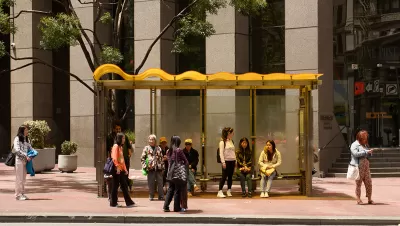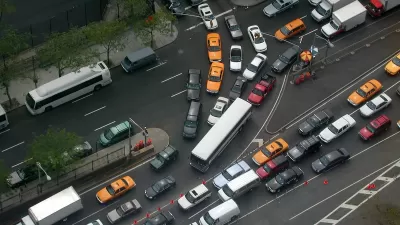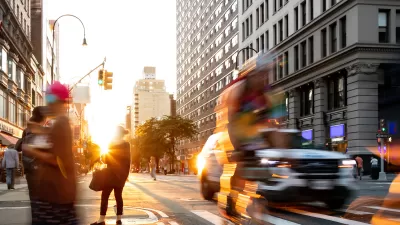Transit-dependent neighborhoods can be found in almost all major U.S. cities, according to a new analysis of Census data.

A recent analysis from Chris Winters found that in almost every major U.S. city–even the most car-dependent ones–a segment of the population lives without private cars, signaling a need for improved public transit in these neighborhoods. "In a whopping 1,660 census tracts, more than 50 percent of occupied households were carless." As Kea Wilson writes, "tracts with light rail lines tended to have higher concentrations of households without automobiles, though in some cities, like Baltimore, some of the most heavily transit-dependent areas weren’t being served by rail at all — consistent with recent research that shows that local transportation leaders are failing to prioritize convenient shared options for the Charm City residents who need them most." In other cities, "car-light neighborhoods were more heavily associated with concentrated poverty than robust transit investment."
"Winters acknowledges that truly auto-light havens are still few and far between in the United States, noting that there are only 350 census tracts across America where more than 75 percent of households are living without a car — and the vast majority of them (312) are located in his transit-rich New York City." Winters concludes that "even the most car-dependent communities likely have more demand for transit than their leaders are answering, and not always in the neighborhoods they might assume."
FULL STORY: U.S. Has More Car-Free Areas Than You Think

Alabama: Trump Terminates Settlements for Black Communities Harmed By Raw Sewage
Trump deemed the landmark civil rights agreement “illegal DEI and environmental justice policy.”

Planetizen Federal Action Tracker
A weekly monitor of how Trump’s orders and actions are impacting planners and planning in America.

Why Should We Subsidize Public Transportation?
Many public transit agencies face financial stress due to rising costs, declining fare revenue, and declining subsidies. Transit advocates must provide a strong business case for increasing public transit funding.

Understanding Road Diets
An explainer from Momentum highlights the advantages of reducing vehicle lanes in favor of more bike, transit, and pedestrian infrastructure.

New California Law Regulates Warehouse Pollution
A new law tightens building and emissions regulations for large distribution warehouses to mitigate air pollution and traffic in surrounding communities.

Phoenix Announces Opening Date for Light Rail Extension
The South Central extension will connect South Phoenix to downtown and other major hubs starting on June 7.
Urban Design for Planners 1: Software Tools
This six-course series explores essential urban design concepts using open source software and equips planners with the tools they need to participate fully in the urban design process.
Planning for Universal Design
Learn the tools for implementing Universal Design in planning regulations.
Caltrans
Smith Gee Studio
Institute for Housing and Urban Development Studies (IHS)
City of Grandview
Harvard GSD Executive Education
Toledo-Lucas County Plan Commissions
Salt Lake City
NYU Wagner Graduate School of Public Service





























